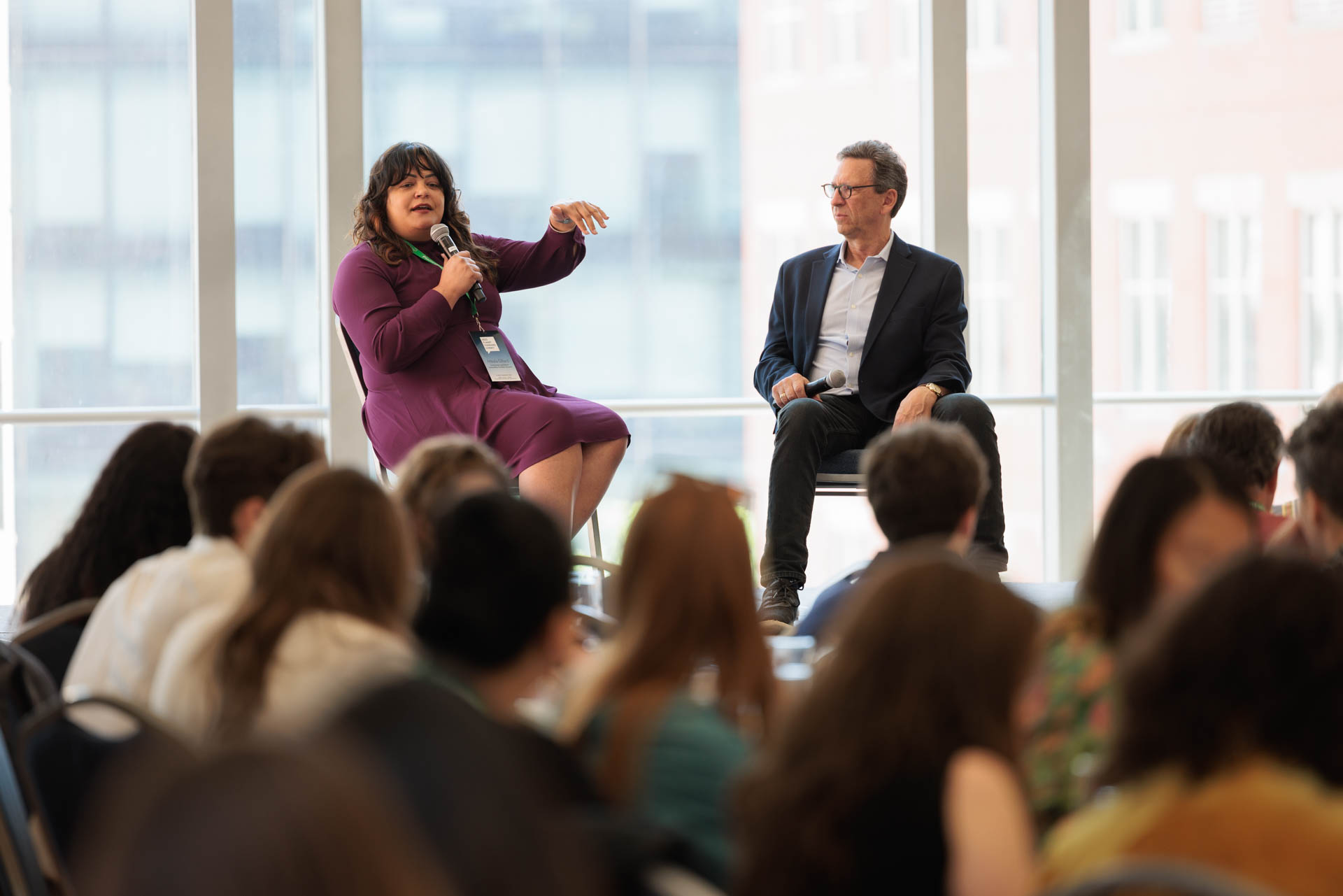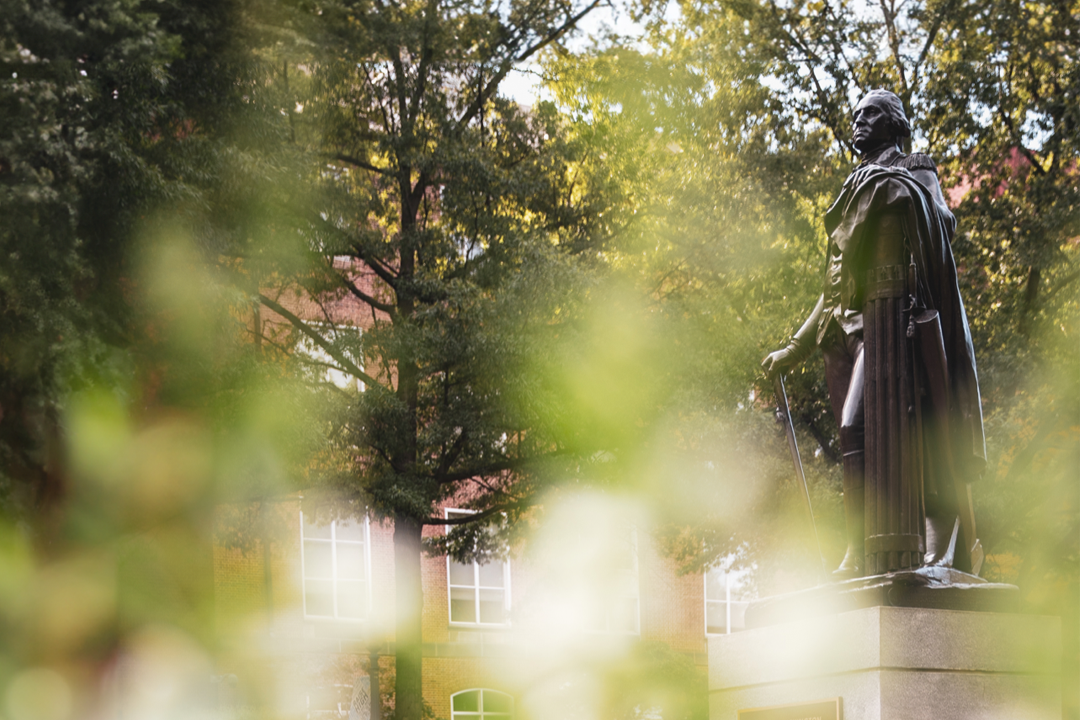David Byrne faces a struggle familiar to many at the George Washington University. The former Talking Heads lead singer is “a bit of a news junkie,” he told an audience at Lisner Auditorium Thursday, and a few years ago he found that the habit was burning him out.
“I was getting very annoyed and depressed and anxious, and that was the way I would start my day,” said Byrne, who visited GW as part of the Society of Environmental Journalists’ (SEJ) 2023 Environmental Journalism Summit.
Byrne was hardly alone in feeling discouraged. Studies suggest that more and more people are avoiding the headlines altogether, exhausted by what feels like an avalanche of bad news. But rather than choose avoidance, Byrne walked himself back from the precipice by saving stories that bucked the prevailing hopeless narrative. That collection evolved into Byrne’s current editorial project, “Reasons to Be Cheerful,” a nonprofit news magazine focused on what’s working to solve the planet’s most pressing problems.
Byrne said he and his team are committed to going beyond frothy, feel-good stories. Journalism on RTBC must meet certain criteria: a deep base of evidence, replicable outcomes and impact beyond a specific local context. To be meaningful, solutions have to have been tested.
“People have good ideas, and good ideas are great, but there’s also a lot of them and they don’t always pan out,” Byrne said.
Once it’s surfaced, some good news seems too major to overlook—yet we do overlook it. Byrne pointed to a report from the National Oceanic and Atmospheric Administration (NOAA) that found that fish stocks are rebounding in United States waters, with few, if any, U.S. populations still classified as “overfished”—news that evinced an audible reaction of pleased surprise even from an audience of environmental journalists. But the fact that we don’t know this stuff, Byrne said, is not because we’re ignorant. It’s just the way our brains work.
“The negativity bias is a big deal,” he said. “We’ve evolved as a species, as most animals do, to be aware of negative things in the environment around us and to be attracted to those more than we would be to things that are good.”
When the COVID-19 pandemic descended shortly after RTBC’s launch in 2019, the team worried they were “staring down the barrel of a public health apocalypse” with a tone-deaf new publication, admitted executive editor Will Doig, who interviewed Byrne.
“But it very quickly became apparent that the pandemic was kind of like a solution-generating machine,” Doig said. “And I feel the same is true of climate change. It feels like a corollary, where this is something that’s so big and so dark and seems so hopeless…[that readers are] hungry for solutions.”
Frank Sesno, SMPA director of strategic initiatives, founding director of Planet Forward and recently-announced executive director of GW’s new Alliance for a Sustainable Future, opened the summit with an interview of Planet Forward Ilíiaitchik: Indigenous Student Correspondent Shondiin Mayo. He said the alliance is an opportunity to galvanize GW’s work around what students increasingly see as the “generationally defining experience” of climate change.
Mayo, who has seen climate change directly and tangibly affect her home community in Alaska, said she hopes people who write and consume stories will try harder to center cultures that for generations have understood and practiced responsible stewardship of their lands.
“As a native person, storytelling is everything,” Mayo said. “It’s what we do, it’s who we are. It’s how we tell our history, how we know ourselves and the land around us and how we relate to other people…Indigenous narratives and ideas should be equally valid and valued.”
The summit closed with a panel of seven media professionals from a range of major news outlets on what they think will be the top environmental stories of 2024. Panelists suggested using all possible lenses to tell environmental justice stories: With the 2024 presidential election certain to dominate headlines, for instance, journalists should consider seeking out pressing climate change issues on the ground in battleground states as those locations come to the fore. That might mean highlighting rising energy and food costs, the effects of El Niño, mining, water protection, Indigenous rights or a wealth of other possible issues.




